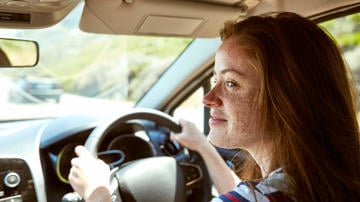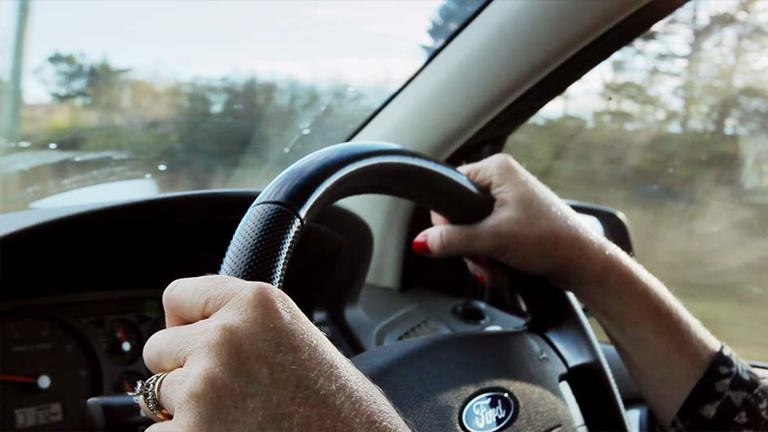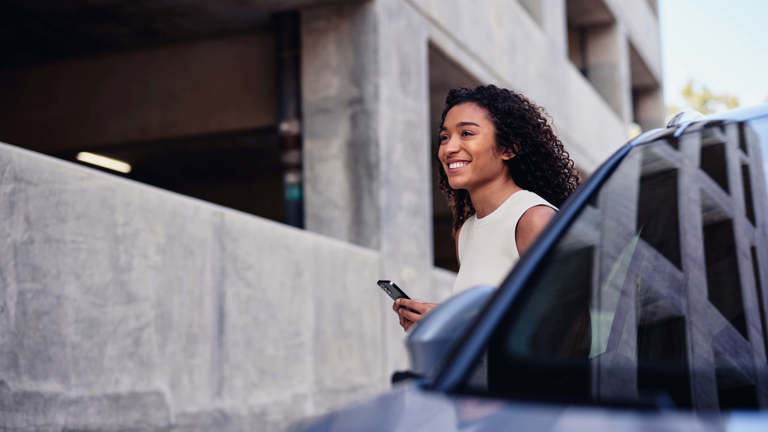Learning to drive is a rite of passage no matter what stage of life you’re in. The fact is, there's no ‘best age’ for learning to drive – it's an exciting time for young drivers, offering the promise of newfound freedom, and can prove a useful skill and lead to positive changes for older learner drivers too.
Just as momentous as getting your L's is being tasked with teaching someone to drive. While the role comes with great responsibility, it can also be a stressful experience if you're not properly prepared.
Planning is key, and that includes making sure both you and your car are ready for your sessions with your L-plate driver.
“Some things to consider include making sure the vehicle is safe, refreshing your road rules knowledge, and planning the lessons in advance,” says Dr Verity Truelove, senior research fellow with the Road Safety Research Collaboration at Queensland's University of the Sunshine Coast.1
All about learner driver insurance
Before your learner even buckles up for their first lesson, it's important to check your insurance coverage.
In your own car, as long as your learner driver is accompanied by a licensed driver (e.g. you or an instructor), they may automatically be covered under your car insurance, however this is often with a higher excess. It’s important to note that policies do differ, so contact your car insurance provider before starting lessons to see if you need to add the learner to your policy.
If you or a driving instructor are teaching an L-plater in the learner’s car however, they are unlikely to be covered under your policy. They will need some form of Compulsory Third Party (CTP) insurance as per their state or territory requirements. From there, they may want to consider a separate insurance policy with higher levels of coverage.
Refresh your road rules knowledge
Although your learner driver will already have obtained their learner's permit, it's a good idea to quiz them on some key road rules before letting them get behind the wheel, just to help make sure the rules are still fresh in their mind.
While all states and territories require learners to have a licensed supervisor present when driving, and for L-plates to be clearly displayed on the front and back of the car, some of the specific rules applying to L-platers do vary. See the following links for the rules in your area:
- ACT2
- New South Wales3
- Northern Territory4
- Queensland5
- South Australia6
- Tasmania7
- Victoria8
- Western Australia9
It might also pay to refresh your own knowledge so you’re aware of any new rules and are demonstrating safe driving – particularly if you’re teaching your own child. “Your children are always learning from you, so don't model any driving behaviour you don't want them to be doing,” says Dr Truelove.
There are a number of resources available if you need to brush up on the road rules, such as the Queensland Government's StreetSmarts website which has a dedicated section for parents of young drivers with tips and advice.10
It's also important to remember that learning to drive safely is about more than simply knowing the rules, so make sure your learner driver gets experience in a wide range of environments and conditions.
“Learning to drive is not just about having the motor skills to manoeuvre and operate a vehicle, it also requires judgement and experience in assessing risk and the learning of safe driving behaviours,” says Sally Webb, Deputy Secretary for Safety, Environment and Regulation at Transport for NSW.
Where to buy L plates
The first step in preparing for a driving lesson is to attach L plates to the front and rear of the vehicle. These can be purchased at most service stations and retailers, or you can make your own using this L plate template.11
Once you have your L plates, take care to display them in accordance with the requirements of your state or territory. In Queensland, for example, if you’re teaching a learner driver how to drive in your own car, you may be fined if the L plates are not displayed correctly. In addition, your learner driver will get demerit points recorded on their traffic history.5
Unless you’re an accredited driver trainer, you could also be fined if you leave the L plates on your car after your learner driver has obtained a provisional or open license.5
Ban mobile phones
It goes without saying that using a mobile phone while driving is illegal. But did you know you could get fined for using your mobile on loudspeaker while your learner is driving?5
“The rules for phone use while driving are different depending on what licence stage you are on, and the rules also differ across Australian states and territories,” warns Dr Truelove.
“In Queensland, learner and P1 drivers aged under 25 years are not allowed to use any phone functions while driving, including Bluetooth, hands-free and loudspeaker functions.”
So make sure your learner driver is aware of the laws concerning mobile phone use while driving in your state or territory.
Make necessary adjustments
Although the position of your driver’s seat might feel perfect to you, it may not be ideal for your learner. Play around with adjusting the seat until it's forward enough for their feet to easily reach the pedals and in a predominantly upright position, so that their head and neck are supported.
Also, make sure they’ve adjusted their rear-view and side mirrors so they can see clearly behind them. A good method is to have them lean their head against the window and adjust the mirror until the edge of the car is barely visible, then repeat for the passenger side. If the learner driver can still see the sides of the car in the mirror, then they are creating blind spots.
Check the controls
If this is the learner's first time behind the wheel, you need to thoroughly familiarise them with the vehicle's controls. Point out windscreen wiper controls, indicators, heater, demister, horn and headlights, as they will need to be able to operate controls while driving.
If it’s a manual vehicle, show them the gear pattern and have them practise the action (making sure the handbrake is on). If it’s an automatic, show them where ‘park’, ‘drive’ and ‘reverse’ are located.
Point out the gauges
By turning on the ignition key far enough to activate the gauges without actually starting the engine, you can point out the speedometer and the temperature, fuel and oil pressure gauges to the learner driver, as well as the various warning lights that indicate improperly closed doors or unfastened seatbelts.
Ready to hit the road? Read up on teaching your learner how to merge properly, and helping them choose their first car.
Note: Information in this article is relevant as of July 2023 and by its nature will change over time. Check relevant Government websites for updates if this information is important to you.
1 Source: University of the Sunshine Coast – MAIC/UniSC Road Safety Research Collaboration
2 Source: ACT Government – ACT driver licence information
3 Source: NSW Government – Learner driver licence
4 Source: NT Government – Get your driver licence
5 Source: Queensland Government – Rules for learner driving
6 Source: SA Government – Licence conditions
7 Source: Plates Plus Tasmania – Learner licence holder
8 Source: Vic Government – Restrictions on learner drivers
9 Source: WA Government – Learn to drive (my first licence)
10 Source: Qld Government – StreetSmarts
11 Source: Queensland Government – L plates





